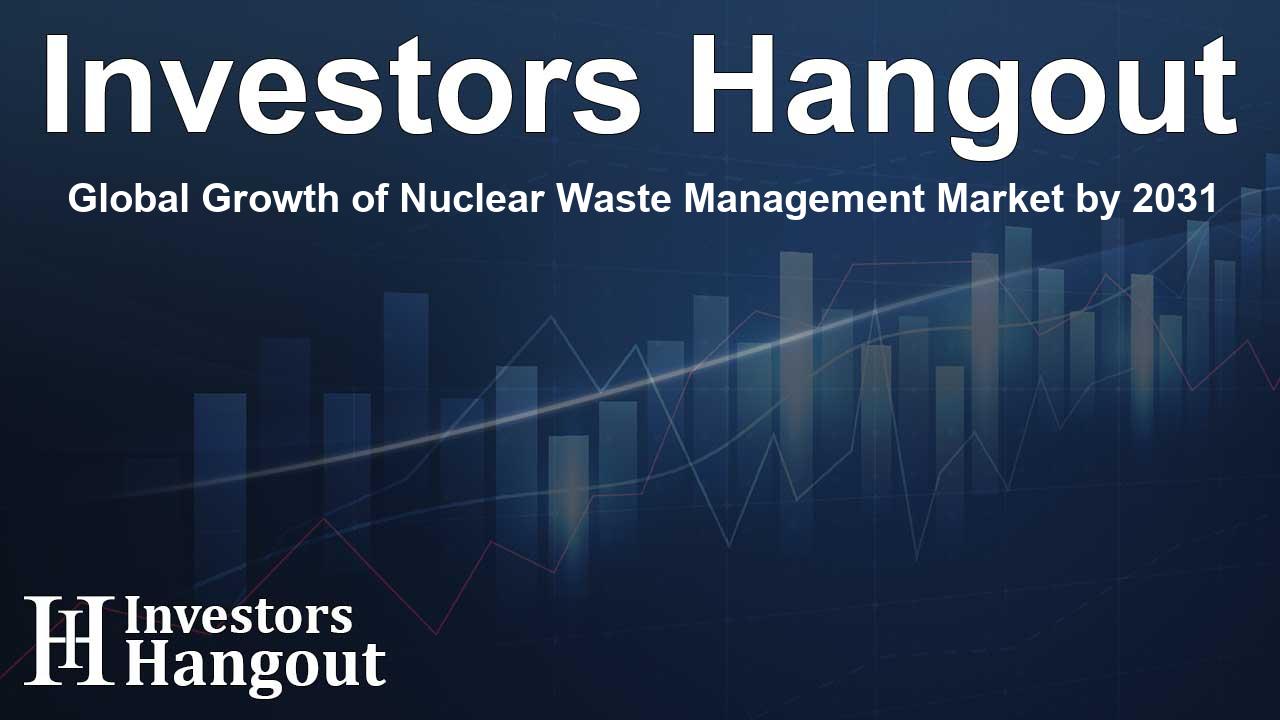Global Growth of Nuclear Waste Management Market by 2031

Nuclear Waste Management Market Overview
The global nuclear waste management market is set to experience significant growth over the coming years. Recent reports indicate an estimated market value of USD 5.00 billion in 2024, with projections to reach USD 5.79 billion by 2031. This expansion translates to a compound annual growth rate (CAGR) of 2.1%, driven by various factors including advancements in waste management technologies like reprocessing.
Driving Factors of Market Growth
The rise in nuclear energy production has led to an increase in the generation of radioactive waste, which in turn drives the demand for efficient nuclear waste management solutions. Annually, approximately 250,000 metric tons of spent fuel is produced globally from the operation of over 450 nuclear reactors, according to resources from the World Nuclear Association. The proliferation of peaceful nuclear technology also fuels higher investment in research and development within this sector.
Investment in Reprocessing Technologies
One of the most notable trends contributing to market growth is the increased investment in reprocessing technologies. These technologies are designed to recover fissile materials from spent nuclear fuel, promoting not only resource efficiency but also waste volume reduction. Countries such as France, Russia, India, and China have pioneered large-scale reprocessing facilities, demonstrating a commitment to advancing nuclear waste management practices.
Final Geological Disposal Developments
In addition to reprocessing efforts, countries like Finland and Sweden have made strides in the establishment of geological repositories for high-level radioactive waste disposal. These underground repositories are engineered to safely contain nuclear materials, paving the way for sustainable waste management solutions that significantly mitigate environmental risks.
Market Segmentation and Revenue Insights
Within the nuclear waste management market, low-level waste (LLW) is expected to dominate, accounting for over 60% of total market shares. LLW typically consists of materials contaminated with radioactive substances, such as tools and clothing. It’s essential to manage this waste effectively until it decays to safe levels, ensuring environmental safety.
Intermediate and High-Level Waste Trends
Intermediate-level waste (ILW), which contains radioactivity higher than LLW but lower than high-level waste (HLW), is projected to be the fastest-growing segment in the market. Techniques such as cementation and vitrification are commonly implemented to immobilize ILW for safer storage and transport. HLW, on the other hand, comprises over 95% of total radioactivity from used fuel and poses significant disposal challenges, necessitating advanced storage solutions such as deep geological disposal.
Key Players and Competitive Landscape
Notable companies in the nuclear waste management arena include Enercon, Veolia, and US Ecology Inc. These organizations are at the forefront of innovative waste management solutions, including the development of spent fuel reprocessing technologies.
Future Market Opportunities
Going forward, the demand for proper nuclear waste storage and disposal methods is expected to increase alongside the expansion of nuclear power generation activities. With a rising awareness of safe practices and technological advancements, these opportunities present a favorable landscape for market growth.
Recent Developments in the Industry
The nuclear waste management sector continues to see advancements, with contracts like the one awarded to Wood by Magnox Ltd for processing and disposal of radioactive waste in the UK signifying ongoing efforts to address this critical issue. Furthermore, initiatives at the governmental level, such as the recent funding proposals in the United States for nuclear waste recycling projects, indicate a robust commitment to enhancing nuclear waste management practices.
Frequently Asked Questions
What is the expected market value of nuclear waste management by 2031?
The nuclear waste management market is projected to reach approximately USD 5.79 billion by 2031.
Which segment has the largest share in the nuclear waste management market?
Low-level waste (LLW) holds the largest share, accounting for over 60% of the market.
What are the major growth drivers for this market?
The primary growth drivers include increasing nuclear energy production and advancements in reprocessing technologies.
Who are the key players in nuclear waste management?
Major companies involved in nuclear waste management include Enercon, Veolia, and US Ecology Inc.
What challenges does high-level waste (HLW) present?
HLW presents significant disposal challenges due to its high radioactivity, necessitating advanced long-term storage solutions like deep geological disposal.
About The Author
Contact Riley Hayes privately here. Or send an email with ATTN: Riley Hayes as the subject to contact@investorshangout.com.
About Investors Hangout
Investors Hangout is a leading online stock forum for financial discussion and learning, offering a wide range of free tools and resources. It draws in traders of all levels, who exchange market knowledge, investigate trading tactics, and keep an eye on industry developments in real time. Featuring financial articles, stock message boards, quotes, charts, company profiles, and live news updates. Through cooperative learning and a wealth of informational resources, it helps users from novices creating their first portfolios to experts honing their techniques. Join Investors Hangout today: https://investorshangout.com/
The content of this article is based on factual, publicly available information and does not represent legal, financial, or investment advice. Investors Hangout does not offer financial advice, and the author is not a licensed financial advisor. Consult a qualified advisor before making any financial or investment decisions based on this article. This article should not be considered advice to purchase, sell, or hold any securities or other investments. If any of the material provided here is inaccurate, please contact us for corrections.
